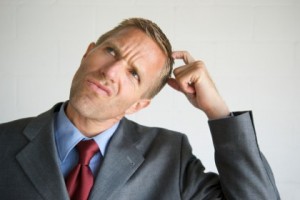Research strikes a blow against ESP – How exactly?
‘Research strikes a blow against ESP’ was the title of an article which appeared in The Age on the 14th of January 2014. It may be found online at http://www.theage.com.au/l i festyl e/l i fe/research-stri kes-a-bl ow-agai nst-esp-20140114-30sck.html or here Research strikes a blow against ESP.
I was intrigued and begun to read with much interest. The Melbourne University researcher, Dr. Howe had apparently devised an experiment that proved that ESP was just an emotional response to subconscious information. As I read on I became increasingly confused. When I had finished reading the article I was no closer to understanding how ESP phenomena were undermined by the evidence put forward. In fact, I had no idea why the topic of ESP was mentioned at all since Dr Howe’s work has absolutely nothing to do with anything of that nature!
I went and read the original journal publication the article was referring to (http://www.plosone.org/article/info%3Adoi%2F10.1371%2Fjournal.pone.0084490). It was published the day before (13th January) on the free-access journal PLOS ONE. In it are described 4 variations of an experiment that involve showing two pictures in succession to a subject. The two pictures are either exactly the same or with a small difference. But the experiment was designed so that the subject would not always be able to consciously process the differences and occasionally the information would pass directly to the subconscious mind.
Dr Howe than asked the subjects if and how the pictures were different. What he found was that subjects were able to report above chance when pictures were different, even though they could not state exactly what the differences were. In other words the subjects subconsciously processed the images and despite their inability to consciously pick up the differences, their ‘gut feeling’ or ‘intuition’ told them that a difference existed.
Interesting reading, but totally unrelated to the phenomenon of ESP. ESP by definition is the ability to obtain information that is not available to the senses. Dr Howe’s research than proceeds to apparently disprove ESP by showing images to the same senses that should by definition not be used by ESP.
Had Dr Howe altered his experimental method, showing only one image, and then ask the subject if this one image was different to a second image placed at some remote location, then he would have been testing for ESP. Instead all that has been proved is that people are capable of subconscious processing.
Indeed, the journal paper made absolutely no reference to ESP or any other parapsychological phenomena. With a free newspaper article and a radio interview the day after the journal publication, the evidence points to free publicity at the expense of parapsychological research.

